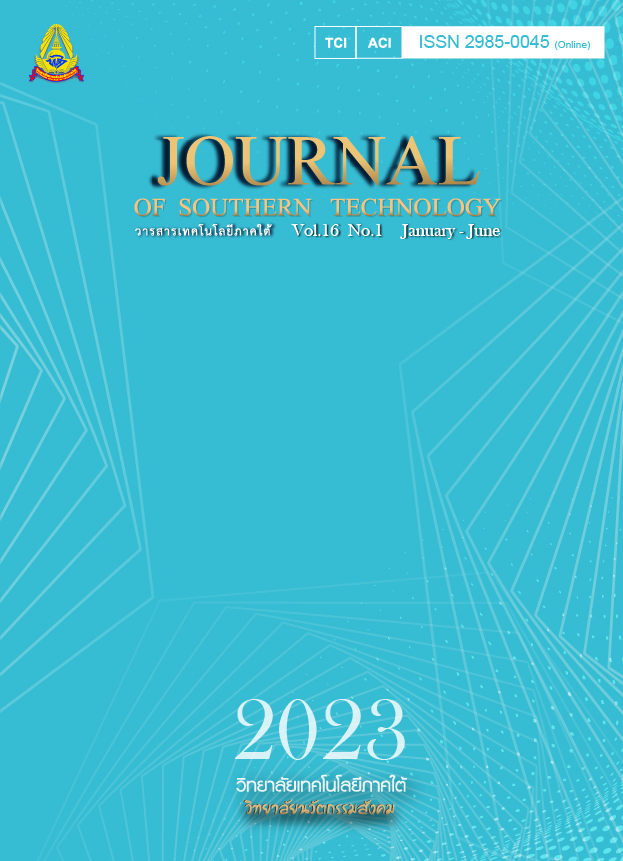The Development of Print and 3D Animation Media Entitled Commercial Deer Farming to Support Agro-tourism 4.0 Business for Chinese Speaking
Main Article Content
Abstract
Nowadays, Agro-tourism 4.0 is one of the attractive tourism models which produces incomes for entrepreneurs and the surrounding community. Pakdee Farm is one of the Agro-tourism destinations that runs business in commercial deer farming and tourism. However, but it lacks suitable media for giving information of commercial deer farming and Agro-tourism. This research aimed 1) to develop print media and 3D animation entitled Commercial Deer Farming in Chinese to support Agro-tourism 4.0 business, and 2) to evaluate quality of developed media to promote their positive perceptions and understanding of the tourist destination in Agro-tourism 4.0 from Chinese tourists and other visitors who are Chinese speakers. Focus group discussion was conducted with 7 people including Pakdee farm entrepreneurs, farm workers, community leaders, and academic officers selected by purposive sampling. A sample of 53 Chinese tourists and those who use Chinese language for communication was selected based on convenience sampling. Microsoft PowerPoint, Canva, QuickTime Player, ZBrush 4R6, Autodesk Maya, and Adobe Premier Pro were used as tools to develop print media and 3D animation. The instruments used for this research were in-depth interview questions and a questionnaire to evaluate quality of the print media and 3D animation. The obtained data were analyzed using percentage, mean, and standard deviation. The print media and 3D animation entitled Commercial Deer Farming in Chinese developed as a result of this study consists of 4 parts. These include backgrounds of commercial deer farming and tourism, deer farm system and management, problems and obstacles in deer farming business, and products made from deer. This research also found that quality of both print media and of the 3D animation was rated at a high level with an average of 4.44 and 4.37, and standard deviation of 0.46 and 0.40; respectively. Results of this research can promote and create positive image of Agro-tourism 4.0 business in community. Furthermore, it can serve the needs of tourists of Chinese speakers and other independent travelers in the future.
Article Details

This work is licensed under a Creative Commons Attribution-NonCommercial-NoDerivatives 4.0 International License.
-
Authors must agree to the journal publication rules and allow the editors to edit the manuscripts for publication.
-
Author’s right belongs to the author but Journal of Southern Technology holds the right of first publication and thus allow readers to use the article for the purpose of education but not commercial.
References
Buaphuan, N. (2021). A Development of electronic book on cultural traveling on horse carriage route for Chinese-speaking tourists. Chinese Studies Journal Kasetsart University, 14(1), 220-243. [in Thai]
Chaijaroen, S. (2011). Educational Technology: Principles Theories to Practices (2nd ed). Khon Kaen: Klungnana. [in Thai]
Chaisaengpratheep, N. (2014). The formats and operation process of agro-tourism. Veridian E-Journal, 7(3), 310-321. [in Thai]
Digital Government Development Agency (Public Organization). (2021). Summary Report on the Number of Tourists Traveling to Thailand and Income from Foreign Tourists Entering Thailand, Data for the year 2015 – 2020. Retrieved December 30, 2021, from https://data.go.th/blog/tourism-2015-2020
Gurutourza. (2016). TAT 2017 Year Plan Through We Care Tourism 4.0. Retrieved April 11, 2022, from http://gurutourza.blogspot. com/2016/07/3-4060.html
Kerdkraikaew, J., Donggan, J., Maeloh, A., & Che-Ouma, N. (2021). The development digital media for anti-corruption in Thailand. Journal of Southern Technology, 14(1), 64-74. [in Thai]
Kuljitjuerwong, S. (2016). Online publishing material guideline in digital era. NIDA Journal of Language and Communication, 21(29), 37-55. [in Thai]
Ladakul, D., & Punya, P. (2018). The development of 3D animation cartoon to promote the integrity for primary school grade 4-6 students. Journal of Applied Informatics and Technology, 1(1), 64-71. [in Thai]
Na Songkhla, T. (2011). Relationship between forms of agro-tourism activities and usage of local agricultural resources:A case study of Changklang agro-tourism, Nakhon Si Thammarat Province. MIS Journal of Naresuan University, 6(2), 1-12. [in Thai]
Numnon, S. (1996). The Definition and the Importance of Printed Media Handout: The Basic of Printed Media (Chapter 1). Nonthaburi: Sukhothai Thammathirat Open University. [in Thai]
Pimon, P. (2019). Strategies of language use of Theema Kanchanpairin in the news program “Jad Sud Took Kwaam Jing”. Journal of Liberal Arts Maejo University, 7(2), 130-142. [in Thai]
Puntatong, A., Phirasant, J., & Soodsang, N. (2012). Particpatory development of printing for the communities around Sukhothai Historical Park. Art and ArchitectureJournal Naresuan University, 3(1), 114-125. [in Thai]
Shawarangkoon, S. (2007). A Comparative Study of Learning Achievement and Interest of Upper-Level Primary School Students Using 2D Animation and 3D Animation (Master’s Thesis), King Mongkut’s Institute of Technology North Bangkok. [in Thai]
Srisa-ard, B. (2002). Basic Research (7th ed). Bangkok: Suweeriyasan.
Waowaew, S., Methachayanan, E., & Upakit, C. (2020). Media animation understanding of Thai culture for chinese tourists to Thailand. Humanities and Social Sciences Review, 8(1), 66-78. [in Thai]
Worakullattanee, K., & Sampattavanija, P. (2008). Advertising. Bangkok: Thammasat University. [in Thai]
Utomchan, W. (1995). Video Production. Bangkok: Chulalongkorn University. [in Thai]

